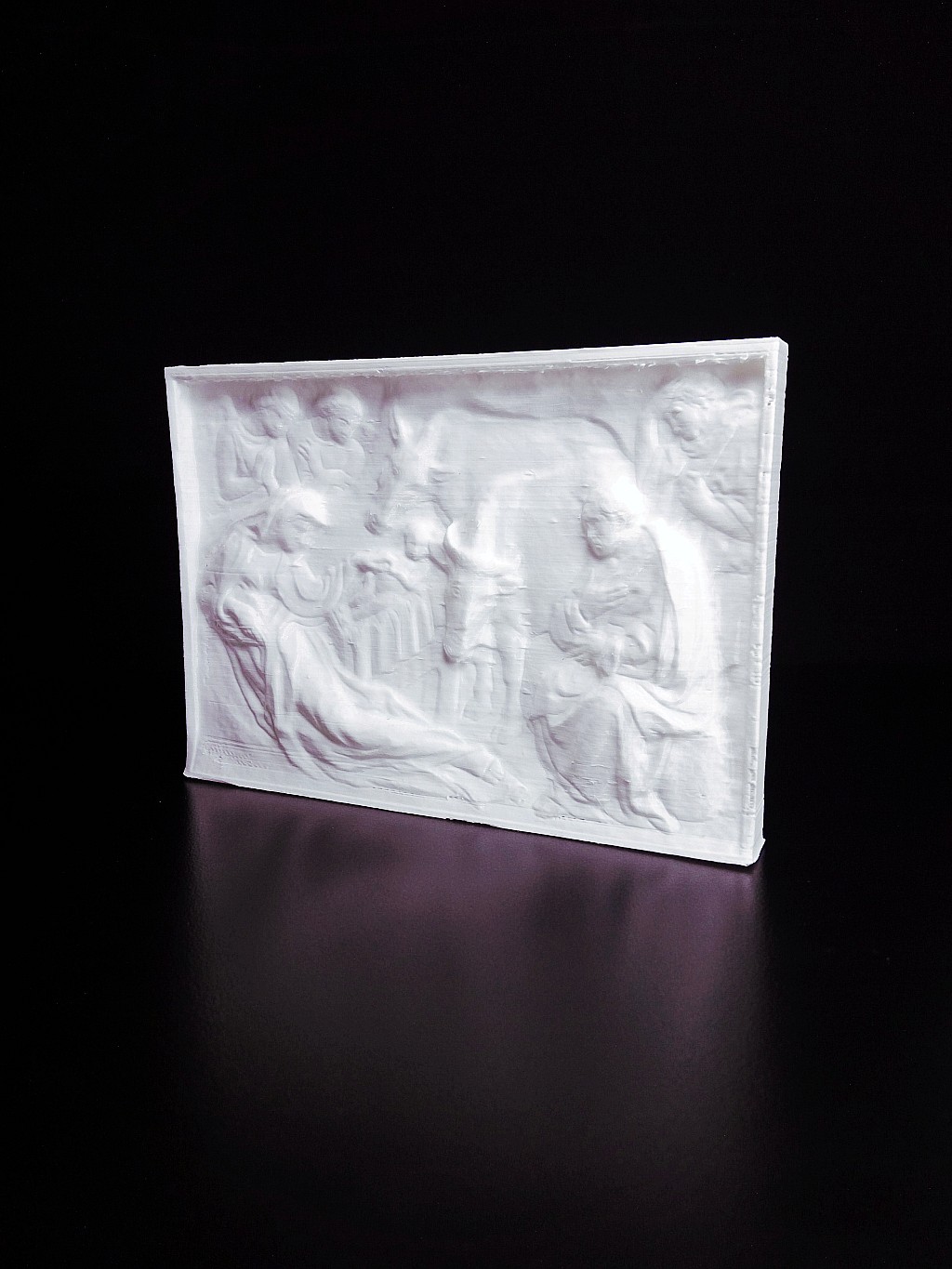
Nativity
myminifactory
-- Who is depicted? The nativity of Jesus or birth of Jesus is described in the gospels of Luke and Matthew. The two accounts agree that Jesus was born in Bethlehem in the time of Herod the Great to a betrothed virgin whose name was Mary.In Christian theology the nativity marks the incarnation of Jesus as the second Adam, in fulfillment of the divine will of God, undoing the damage caused by the fall of the first man, Adam. The artistic depiction of the nativity has been an important subject for Christian artists since the 4th century. Since the 13th century, the nativity scene has emphasized the humility of Jesus and promoted a more tender image of him, as a major turning point from the early "Lord and Master" image, which has had an effect on the basic approaches of Christian pastoral ministry.The nativity plays a major role in the Christian liturgical year. Christian congregations of the Western tradition (including the Catholic Church, the Anglican Communion, and many Protestants) begin observing the season of Advent four Sundays before Christmas, the traditional feast-day of his birth, which falls on December 25. Christians of the Eastern Orthodox Church observe a similar season called the "Nativity Fast" during the forty days leading up to Christmas, which for them falls on January 7 as a result of Orthodox churches continuing to follow the Julian calendar, rather than the modern day Gregorian calendar. -- Technical/Specification about the statue A stele is a stone or wooden slab, generally taller than it is wide, erected in ancient Western culture as a monument, very often for funerary or commemorative purposes ("grave steles"). Stelae as slabs of stone may also be used for ancient Greek and Latin government notices or as territorial markers to mark borders or delineate land ownership. The surface of the stele may very often have text and/ or have ornamentation. This ornamentation may be inscribed, carved in relief, or painted onto the slab. Traditional Western gravestones may technically be considered the modern equivalent of ancient stelae, though the term is very rarely applied in this way. Equally, stelae-like forms in non-Western cultures may be called by other terms, and the words "stele" and "stelae" are most consistently applied in archaeological contexts to objects from Europe, the ancient Near East and Egypt, China, and sometimes Pre-Columbian America. -- More about the artist Jacopo della Quercia takes his name from Quercia Grossa (now Quercegrossa), a place near Siena, where he was born in 1374. He received his early training from his father, Piero d'Angelo, a woodcarver and goldsmith. Jacopo della Quercia, a Sienese, must have seen the works of Nicola Pisano and Arnolfo di Cambio on the pulpit in the cathedral of Siena and this must have influenced him. His first work may have been at the age of sixteen, an equestrian wooden statue for the funeral of Azzo Ubaldini. He left with his father to Lucca, owing to party strife and disturbances.In Pisa, della Quercia likely studied the huge collection of Roman sculptures and sarcophagi in the Camposanto. These and later influences made him a transitional figure in the history of European art; his work shows a pronounced midcareer shift from the Gothic style to that of the Italian Renaissance. As in the case of Ghiberti, this development probably results from exposure to his contemporary, Donatello.Della Quercia's earliest work (though this attribution is sometimes contested) appears in the Lucca cathedral: Man of Sorrows (Altar of the Sacrament) and a relief on the tomb of St. Aniello. In 1401 he entered a competition to design the bronze doors for Florence's Baptistery, but lost to Ghiberti. The unsuccessful entry's whereabouts are unknown.In 1403 he sculpted the marble Virgin and Child for the Ferrara cathedral. Another (possible) work from his period in Ferrara is the statuette of St. Maurelius (both on in display in the Museo del Duomo).Back again in Lucca in 1406, he received the commission from the city's ruler, Paolo Guinigi, to begin work at the tomb of his second wife Ilaria del Carretto in the Lucca cathedral. The richly dressed woman rests on top of the sarcophagus, delicately portrayed in a Gothic fashion, with her dog, symbol of conjugate fidelity, at her feet. But his use of several nude putti at the flanks of the tomb clearly shows the classical influence of the Roman sarcophagi at Camposanto (Pisa). This is a first, a harbinger of the incipient Renaissance.
With this file you will be able to print Nativity with your 3D printer. Click on the button and save the file on your computer to work, edit or customize your design. You can also find more 3D designs for printers on Nativity.
